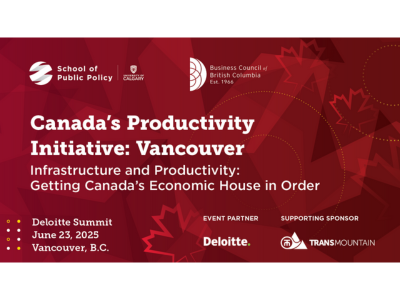A Canada-Taiwan FIPA: The Time Finally Seems Right
The announcement on January 9, 2022, that Canada and Taiwan have agreed to launch exploratory discussions toward conclusion of a Foreign Investment Protection Agreement (FIPA) has been a long time coming–and is very timely. It may constitute a down-payment on an Indo-Pacific Strategy that is reportedly under preparation in Ottawa. Discussion of a possible FIPA with Taiwan first started back in 2013 on the margins of APEC, but did not progress. Canada’s official position then was that it was undertaking a review of its FIPA model agreement and was therefore not in a position to engage in discussions until the review was completed. That was a convenient fig-leaf at a time when there was still widespread expectation that a Canada-China Free Trade Agreement (FTA) was on the horizon. Those hopes were dashed in December of 2017 when the Chinese refused to sign on to Canada’s “progressive” trade agenda during Prime Minister Trudeau’s visit to Beijing, despite speculation in Canada that an announcement regarding a launch of negotiations was imminent. Any hopes that the FTA might be resurrected were dashed with the arrest of Huawei executive Meng Wanzhou at Vancouver Airport in December of 2018, followed by the retaliatory arrests by China of Canadians Michael Kovrig and Michael Spavor on national security charges.
In May of 2021 Canada finally released the framework of its new standard FIPA template. The new model agreement clarified a number of issues, including application of national treatment, most-favoured nation (MFN) treatment, and minimum standards of treatment. It specifies more clearly where governments may act in the public interest to restrict investment without violating the treaty’s terms, includes but tightens investor-state dispute settlement processes (ISDS) and in particular aims to be more inclusive, taking account of the interest of small and medium sized enterprises (SMEs) while stressing greater gender equality and respect for Indigenous rights. There is no reason to think that Taiwan will have any particular difficulty in applying these standards if an agreement is reached with Canada. The new model reflects lessons learned from earlier FIPAs, with updates drawing on provisions in Canada-EU Comprehensive and Economic Trade Agreement (CETA) and the Comprehensive and Progressive Trans-Pacific Partnership (CPTPP). The intent of a FIPA is to reassure investors that they will be treated fairly and not subject to abusive expropriation. It also provides a transparent and time-limited dispute resolution process. Taken together, the assurances provided by a FIPA generally help promote and increase bilateral investment.
If exploratory discussions are fruitful, Canada and Taiwan will then decide whether to launch formal negotiations. There are good reasons why it would be in Canada’s interests to proceed. During the COVID recession, Taiwan’s economy has been one of the strongest in the Asia region, enjoying a steady rate of economic expansion while growth in many other economies has stagnated. Taiwan produces many of the products that have been in great demand during the COVID lockdown periods, such as IT and communications tools. It is one of the world’s largest producers of semi-conductors that are so essential in most electronic products today, from autos to computers to medical equipment. TSMC, Taiwan’s leading producer of semiconductors, is building a $12 billion chip fab in Phoenix, AZ and already has an R&D facility in Ottawa.
The Ottawa facility is, to date, one of the few major direct investments in Canada by Taiwanese firms. It is estimated that Taiwanese direct investment in Canada amounts to just over USD $500 million, according to Taiwanese statistics, about half that according to Canadian figures. Taiwan is the 42nd largest investor in Canada, with investments mainly in electronics, pharmaceuticals, chemicals and finance. Compare this to estimated total overseas investment by Taiwanese companies of over $380 billion USD to the end of 2020, and whether the figure is $250 million or $500 million, (some Taiwanese investment is registered with offshore entities and foreign subsidiaries and may not be captured by official Canadian investment statistics as being of Taiwanese origin), it is clear that Taiwanese investment in Canada is miniscule. It is certainly not reflective of the full potential of the bilateral economic relationship nor of Taiwan’s global economic clout. Canadian investment in Taiwan, according to Canadian statistics, has grown in recent years to reach over $550 million in 2020. Here too, there is scope to do so much more as Taiwan is just the 62nd largest recipient of Canadian direct investment. This puts Taiwan behind such countries as Malta, Mauritius, Cambodia and Albania, to name just a few, as recipients of Canadian investment. In recent years, Canadian firms have made important investments in wind power in Taiwan, but there is good potential in other sectors where Canada has world leading expertise, such as in clean technology and ICT.
If Canada and Taiwan can conclude a FIPA this will be a welcome additional building block in the unofficial bilateral relationship, adding to the Avoidance of Double Taxation Arrangement reached in 2016 and a longstanding air services agreement. Because there are no official diplomatic relations between Canada and Taiwan, such agreements are signed between the unofficial local representative offices of the two parties, the Canadian Trade Office in Taipei and the Taipei Economic and Cultural Office in Canada and are referred to as “arrangements”. Taiwan has signed Free Trade Agreements with New Zealand and Singapore, in its capacity as a separate customs territory and member of the World Trade Organization. While a Canada-Taiwan FTA is unlikely to be in the cards, Taiwan’s application to join the CPTPP presents an opportunity to address bilateral market opening measures in a broader context, while potentially reducing the potential for Chinese retaliation against Canadian exports. The Chinese are not happy about Taiwan’s application to join the CPTPP, but they can hardly object since they themselves have also formally applied, and both China and Taiwan are already members of both the WTO and APEC.
Both China’s and Taiwan’s CPTPP applications will have to considered by all the members of the CPTPP, not just Canada. In deciding whether to proceed with formal entry negotiations, as is currently the case with the U.K.’s CPTPP application, existing members will want to assure themselves that potential members are able and willing to meet the CPTPP’s high standards. Taiwan, as an increasingly open economy, should have little difficulty in doing so.
Launching exploratory discussions for a FIPA is a welcome concrete step in deepening the economic relationship between Canada and Taiwan, a dynamic and democratic economy of almost 24 million people, with a population and economy about the size of Australia. While ostensibly tied to the conclusion of Canada’s review of its model FIPA framework, the timing of Canada’s re-engagement with Taiwan on a bilateral investment agreement significantly comes at a time when Canada is actively exploring a new Indo-Pacific strategy that will seek to diversify its trade and economic relations in the region, with a de-emphasis on the role of China.
China will always be an important factor for Canada to consider in developing regional initiatives but the overriding policy concern of past years dictating that relations with Taiwan should not be allowed to impede closer economic ties with China appears to have abated, allowing Canada-Taiwan relations in the trade, investment and cultural areas to develop on their own merits. This is an important shift in emphasis and should allow Canada to derive greater benefit by attracting additional Taiwanese investment while strengthening Canadian investments in and exports to this important regional economy.
Hugh Stephens is an Executive Fellow, The School of Public Policy; and Distinguished Fellow, Asia Pacific Foundation of Canada
More from author Hugh Stephens HERE
© Hugh Stephens, 2022. All Rights Reserved.


